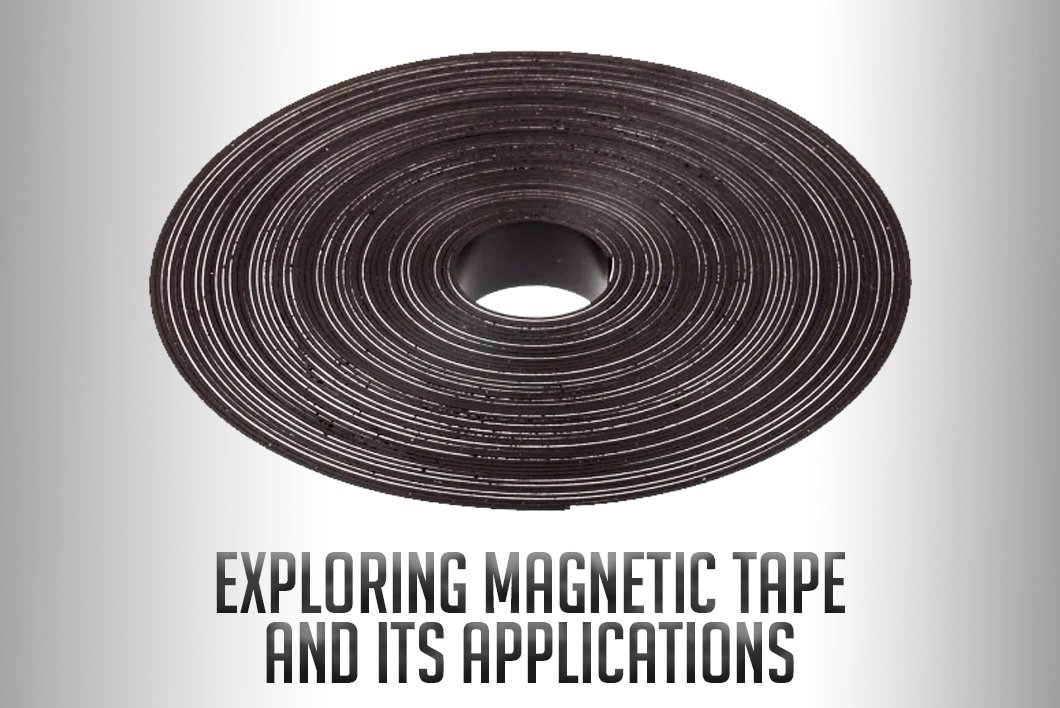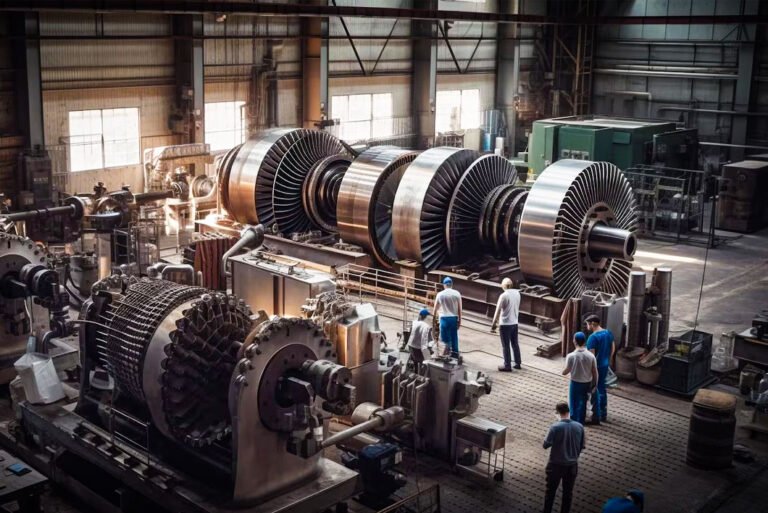Introduction
Exploring Magnetic tape has been a pivotal medium for storing data in the form of magnetic fields. It plays a significant role in both data storage and archiving, with a rich history dating back to its development in Germany in 1928.
In this article, we will delve into the world of magnetic tape, exploring its composition, working mechanism, advantages, and disadvantages. Additionally, we will examine its wide-ranging applications across industries such as audio recording, video production, and computer data storage.
Key Takeaway: This comprehensive exploration aims to shed light on:
- The evolution of magnetic tape technology
- Comparison with alternative storage methods like disk and cloud storage
- The significance of magnetic tape in long-term archiving
- Future prospects
Understanding Magnetic Tape
Magnetic tape is a versatile medium used for data storage and archiving purposes. It consists of a thin, magnetizable coating on a long, narrow strip of plastic film. This composition allows magnetic tape to store and retrieve data using magnetic fields.
Here are the key points to understand about magnetic tape:
Definition and Structure
- Magnetic tape is a flexible strip made of plastic film coated with a magnetizable material, typically iron oxide or metal particles.
- The tape is wound onto a spool, allowing it to be easily transported and stored.
- The magnetizable coating is divided into tracks, which can be read and written by magnetic heads in tape drives.
Working Mechanism
- When data is written onto magnetic tape, the magnetic heads align the magnetizable particles in specific patterns that represent binary information.
- To read the data, the magnetic heads detect the changes in magnetic fields as they pass over the magnetized particles on the tape.
- The tape drive converts these magnetic field changes into electrical signals, which are then processed and interpreted as data.
Advantages of Magnetic Tape
- High storage capacity: Magnetic tapes have the ability to store large amounts of data, making them ideal for long-term archiving.
- Cost-effective: Compared to other storage media like hard drives or solid-state drives (SSDs), magnetic tapes offer a lower cost per gigabyte.
- Durability: Magnetic tapes are resistant to physical damage and can withstand harsh environmental conditions, making them reliable for long-term storage.
Disadvantages of Magnetic Tape
- Access time: Retrieving specific data from magnetic tape may take longer compared to disk-based storage systems.
- Sequential access: Magnetic tapes are designed for sequential access rather than random access, meaning that accessing data at any point on the tape requires reading through previous sections.
Understanding how magnetic tape works and its unique characteristics sets the foundation for exploring its applications across various industries, which we will delve into in the following sections.
Evolution of Magnetic Tape Technology
Advancements in Magnetic Tape Technology
Magnetic tape technology has come a long way, with significant improvements in storage capacity, data transfer speed, and reliability. These upgrades have made magnetic tapes more useful across different industries.
The Role of the LTO Consortium
The LTO (Linear Tape-Open) Consortium has been crucial in pushing magnetic tape technology forward. By working together, the consortium has consistently introduced new versions of LTO Ultrium tapes, each with more storage space and better performance.
How LTFS Changed Things
The introduction of LTFS (Linear Tape File System) has completely changed how we access and handle data on magnetic tapes. With LTFS, we can now view data on tapes just like how we would with files on a computer’s hard drive. This has made retrieving data from tapes much easier and similar to using regular storage systems.
The development of magnetic tape technology has seen various game-changing improvements, from bigger storage capacities to better ways of getting data. Groups like the LTO Consortium have played a big part in making these advancements happen and ensuring that magnetic tapes are still an effective and dependable storage option today. Plus, the use of LTFS has solved old issues tied to accessing data on magnetic tapes, making them even more practical and attractive for long-term archiving purposes.
Applications of Magnetic Tape
Audio Recording
The pivotal role played by magnetic tape in revolutionizing the audio recording industry has been monumental. Before the digital era, magnetic tape was the primary medium for capturing and reproducing sound, shaping the music industry and enabling artists to create timeless recordings.
Analog Warmth and Richness
The analog warmth and richness of sound achieved through magnetic tape are considered by many audio enthusiasts as unparalleled, contributing to its enduring appeal.
Advantages of Magnetic Tape for Sound Capture
Advantages of using magnetic tape for achieving high-fidelity sound capture are significant:
- The inherent analog nature of magnetic tape allows for a continuous, smooth representation of sound waves, resulting in a natural and dynamic audio quality.
- The saturation and compression characteristics of magnetic tape contribute to the coveted “tape sound,” adding depth and warmth to recordings.
- Magnetic tape’s ability to capture a wide dynamic range makes it an ideal choice for preserving the nuances of live performances and studio sessions, ensuring authenticity in audio reproduction.
Resurgence in Vinyl Records and Analog Techniques
The resurgence of interest in vinyl records and analog recording techniques has also sparked a renewed appreciation for magnetic tape, with many contemporary artists choosing to incorporate it into their creative processes.
Despite the widespread adoption of digital recording technologies, magnetic tape continues to hold a special place in the hearts of audio purists and professionals seeking to infuse their recordings with a classic, vintage vibe.
The enduring appeal of magnetic tape in audio recording showcases its timeless relevance in an ever-evolving industry, where innovation coexists with cherished traditions.
Video Recording
The widespread adoption of magnetic tape as a preferred medium for video production and broadcasting is another testament to its versatility and reliability. Just as it revolutionized the audio recording industry, magnetic tape played a pivotal role in transforming the world of video recording.
Advantages of Magnetic Tape in Video Recording
One of the key advantages offered by magnetic tape in video recording is its ability to maintain video quality and integrity. Here’s why:
- High-quality video capture: The high data transfer rates and large storage capacities of magnetic tape make it an ideal choice for capturing and preserving high-resolution videos.
- Clarity and sharpness: With its excellent signal-to-noise ratio, magnetic tape ensures that the recorded videos retain their clarity and sharpness.
Benefits of Magnetic Tape for Video Production
Moreover, magnetic tape provides a stable and consistent medium for video production. Here’s how:
- Seamless editing: It allows for seamless editing, duplication, and distribution of video content.
- Precise control over editing: The linear nature of tape-based recording ensures a smooth flow of data, enabling precise control over the editing process.
Reliability of Magnetic Tape for Archival Purposes
In addition to preserving video quality, magnetic tape also offers long-term reliability for archival purposes. Here’s why:
- Durability: Its durability and resistance to physical damage make it an excellent choice for storing valuable video footage over extended periods.
- Trusted medium for historical footage: Many film archives still rely on magnetic tape as a trusted medium for preserving historical footage.
Relevance of Magnetic Tape in the Digital Age
Overall, the benefits provided by magnetic tape in video recording highlight its enduring relevance in the digital age. Despite advancements in digital storage technologies, magnetic tape continues to be valued for its reliability, cost-effectiveness, and long-term archiving capabilities. Its unique combination of high-quality performance and longevity makes it an indispensable tool in the world of video production and broadcasting.
Computer Data Storage
Magnetic tape has been an integral part of computer data storage since its early days. It was one of the first mediums used for storing large quantities of data, offering a cost-effective solution for organizations to archive and back up their critical information.
Early utilization of magnetic tape for computer data storage purposes
In the early 1950s, magnetic tape quickly became the primary method for data storage in mainframe computers. Its high capacity and relatively low cost made it an ideal choice for handling large volumes of data.
Advancements in data density that have expanded the storage capacity of modern tapes
Over the years, significant advancements in magnetic tape technology have led to increased data density, allowing modern tapes to store terabytes of data. This expansion in capacity has ensured that magnetic tape remains a viable option for long-term archival and backup needs, especially for organizations dealing with massive datasets.
Magnetic tape continues to play a crucial role in the realm of computer data storage, offering a balance between cost-effectiveness and reliability, making it an essential component of multi-tiered storage strategies for enterprises and institutions dealing with extensive data requirements.
Longevity and Archiving with Magnetic Tape
Magnetic tape has been a reliable medium for long-term data storage, but it comes with challenges related to longevity. Here are some key points to consider:
1. Longevity Challenges
Over time, magnetic tape can degrade due to factors such as temperature variations, humidity, and mechanical wear. This degradation can lead to data loss and reduced integrity of the stored information.
2. Mitigating Strategies
Proper archiving strategies can help mitigate the longevity challenges associated with magnetic tape. These strategies may involve controlled environmental conditions for storage, regular data migration to newer tapes, and thorough monitoring of tape health.
3. Comparative Analysis
When compared to disk-based archiving systems, magnetic tape offers distinct advantages in terms of long-term archiving. While disks are susceptible to mechanical failures and have a shorter lifespan, magnetic tapes can be specifically designed for extended archival purposes.
Addressing the longevity challenges of magnetic tape through effective archiving strategies is essential for ensuring the integrity and accessibility of archived data. When compared to other archiving methods, magnetic tape remains a viable solution for long-term data preservation when properly managed.
Magnetic Tape vs. Disk Storage and Cloud Storage
When comparing magnetic tape, disk storage, and cloud storage, several factors come into play. Each has its own set of advantages and limitations that make them suitable for different use cases.
Capacity
- Magnetic Tape: Known for its high capacity, making it ideal for long-term data storage.
- Disk Storage: Offers relatively lower capacity compared to magnetic tape.
- Cloud Storage: The capacity can be easily scalable based on the service provider’s offerings.
Cost-effectiveness
- Magnetic Tape: Generally more cost-effective for long-term archiving due to its low cost per terabyte.
- Disk Storage: Initial setup costs and maintenance can make it less cost-effective for long-term archiving.
- Cloud Storage: Costs can vary based on usage and may become expensive for large-scale long-term storage.
Accessibility
- Magnetic Tape: Retrieval of data may take longer due to sequential access, but it is suitable for infrequently accessed archival data.
- Disk Storage: Offers faster accessibility due to random access, making it suitable for frequently accessed data.
- Cloud Storage: Accessibility speed can vary based on network bandwidth and service provider infrastructure.
Data Security
- Magnetic Tape: Can be stored offline, providing a level of security against cyber threats. However, physical damage or loss of tapes can pose risks.
- Disk Storage: Vulnerable to cyber threats but offers faster data encryption options and replication for added security.
- Cloud Storage: Relies on the service provider’s security measures and encryption protocols, with potential risks of unauthorized access.
By considering these factors, organizations can determine the most suitable storage solution based on their specific needs and priorities.
Future of Magnetic Tape Technology
Introduction of LTO-9
Magnetic tape technology has continued to evolve, and the latest development in this space is the introduction of LTO-9. This advancement brings higher storage capacities and faster data transfer rates, further enhancing the capabilities of magnetic tape for long-term data storage and archiving.
Potential Future Advancements
Looking ahead, there are potential future advancements and use cases that could drive the continued relevance of magnetic tape in the digital storage landscape. Some areas of exploration and development include:
1. Increased Storage Density
Continued research and innovation aim to increase the data storage density of magnetic tapes, allowing for even greater capacities within the same physical footprint.
2. Enhanced Reliability
Future developments may focus on improving the durability and reliability of magnetic tape technology, ensuring that stored data remains accessible and intact over extended periods.
3. Energy-Efficient Solutions
There is a growing emphasis on developing energy-efficient technologies, and magnetic tape could see advancements in this area to reduce its environmental impact while maintaining high performance.
Adaptation to Industry Needs
As the demand for long-term, cost-effective data storage solutions persists, magnetic tape technology is likely to adapt and innovate to meet these needs. With ongoing advancements such as LTO-9 and potential future developments, magnetic tape continues to hold promise for various industries requiring reliable archiving solutions.
Conclusion
When it comes to data storage and archiving, magnetic tape continues to be a relevant and valuable solution, despite the dominance of newer technologies in the mainstream market. As we have explored throughout this article, magnetic tape offers unique benefits that make it an ideal choice for long-term data preservation.
Evaluate Your Specific Requirements
Before making a decision on your storage and archiving needs, it is essential to evaluate your specific requirements. Magnetic tape excels in scenarios where large amounts of data need to be stored securely for extended periods. It is particularly well-suited for industries such as audio recording, video production, and computer data storage.
Adopt a Multi-Tiered Approach
To maximize the effectiveness of your storage strategy, consider adopting a multi-tiered approach that combines magnetic tape with other solutions like disk storage and cloud storage. Each method has its advantages and can complement one another to create a robust and comprehensive system.
Stay Informed About Advancements
Staying updated on the advancements in magnetic tape technology is crucial to ensure you are leveraging the latest innovations. The introduction of LTO-9 is just one example of how magnetic tape continues to evolve and improve its capacity and capabilities. Keep an eye out for future LTO generations like LTO-10 and beyond, as they promise even greater potential for the digital storage landscape.
Make an Informed Decision
In conclusion, while newer technologies may dominate the market, magnetic tape remains an invaluable tool for long-term data preservation. By considering your specific needs, adopting a multi-tiered approach, and staying informed about advancements in magnetic tape technology, you can make an informed decision on whether it is the right solution for you.
Magnetic tape: still holding value in the digital age.








